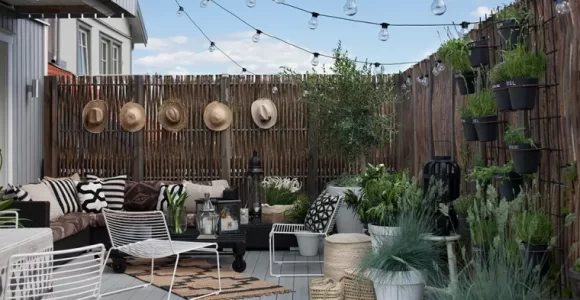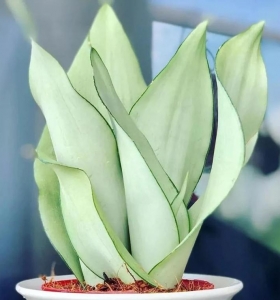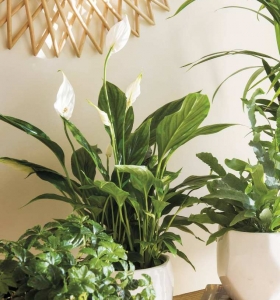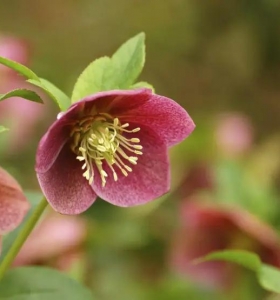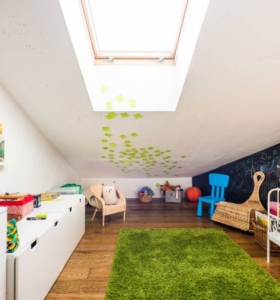Como tener un jardín de flores – 10 opciones y consejos sobre su cultivo
Como tener un jardín de flores – 10 opciones y consejos sobre su cultivo
Un jardín de flores es un oasis de belleza y color en nuestro hogar. Tener un espacio lleno de flores nos permite disfrutar de la naturaleza y crear un ambiente agradable y relajante. Si estás pensando en tener un jardín de flores, aquí te presentamos 10 opciones y consejos sobre su cultivo.
1. Escoge las flores adecuadas: Antes de comenzar, es importante investigar qué tipos de flores son ideales para tu región y clima. Algunas flores requieren más sol, otras más sombra, así que debes tener en cuenta estos factores al momento de escoger las variedades.
2. Prepara el suelo: Un suelo sano y bien preparado es clave para el desarrollo de las flores. Asegúrate de quitar las malas hierbas y agregar abono orgánico para mejorar la calidad del suelo.
3. Planea la distribución: Antes de sembrar las flores, es recomendable planificar la distribución de las mismas en el jardín. Puedes crear caminos o separarlas por colores para crear un efecto visual más atractivo.
4. Siembra en el momento adecuado: Cada flor tiene su época ideal de siembra, por lo que es necesario investigar cuándo es el mejor momento para sembrar cada especie. Esto garantizará que las flores crezcan sanas y fuertes.
5. Mantén un riego regular: Las flores necesitan un riego constante para su correcto crecimiento. Asegúrate de regarlas regularmente, evitando encharcamientos que puedan perjudicar sus raíces.
6. Protege tus flores: Algunas flores pueden ser vulnerables a plagas y enfermedades. Mantén un control adecuado y utiliza métodos naturales para combatirlas, evitando el uso de pesticidas químicos que puedan dañar el medio ambiente.
7. Abona regularmente: A lo largo del crecimiento de las flores, es importante proporcionarles nutrientes adicionales mediante abono orgánico. Esto ayudará a mantenerlas saludables y con flores más llamativas.
8. Poda adecuadamente: La poda es esencial para mantener la forma y salud de las plantas. Retira las flores marchitas y realiza podas regulares para estimular el crecimiento y evitar enfermedades.
9. Atrae polinizadores: Para que tus flores se mantengan saludables y se polinicen adecuadamente, es importante atraer a polinizadores como abejas y mariposas. Puedes lograrlo plantando flores que les atraigan, como lavanda o girasoles.
10. Disfruta y admira: Finalmente, no olvides disfrutar y admirar tu jardín de flores. Crea espacios de descanso para poder relajarte y disfrutar de la belleza de tus flores.
Tener un jardín de flores requiere dedicación y cuidado, pero los resultados valen la pena. Siguiendo estos consejos y opciones, podrás crear un jardín lleno de vida y color que alegrará tu hogar durante toda la temporada. ¡Disfruta de la magia de las flores y déjate envolver por su fragancia y belleza! ¡Recuerda que tener un jardín de flores requiere tiempo y paciencia! No te desanimes si tus flores no crecen rápidamente o si enfrentas obstáculos en el camino. Sigue cuidando y mimando tus plantas y pronto verás los resultados. ¡Buena suerte con tu jardín de flores! ¡No te olvides de mantener tu jardín de flores limpio! Realiza limpiezas regulares para eliminar hojas y flores marchitas, así como también malas hierbas que puedan competir por los nutrientes con tus flores.
Considera la posibilidad de utilizar macetas o jardineras para cultivar tus flores. Esto te permitirá tener mayor control sobre el suelo y las condiciones de cultivo, además de facilitar el mantenimiento y la movilidad de las plantas.
Recuerda que las flores necesitan luz solar para crecer y florecer adecuadamente. Asegúrate de ubicar tu jardín en un lugar donde reciban al menos 6 horas de luz directa al día.
Si tienes espacio limitado, considera cultivar flores en vertical. Las paredes o enrejados son excelentes opciones para cultivar trepadoras o enredaderas que aportarán color y textura a tu jardín.
No te limites solo a flores anuales, también considera cultivar flores perennes que volverán a florecer año tras año. Esto te permitirá disfrutar de un jardín lleno de flores todos los años sin tener que replantar constantemente.
Investiga acerca de las necesidades de cada variedad de flores que elijas cultivar. Algunas pueden requerir de ciertos cuidados especiales, como un tipo específico de suelo, fertilizantes particulares o riegos más frecuentes. Asegúrate de brindarles los cuidados adecuados para asegurar su crecimiento adecuado.
No olvides agregar elementos decorativos a tu jardín de flores, como fuentes, estatuas o jardineras colgantes. Estos detalles pueden agregar más belleza y personalidad a tu espacio.
Experimenta con diferentes combinaciones de colores y texturas en tu jardín de flores. No tengas miedo de mezclar diferentes variedades y tamaños para crear un efecto visual único y cautivador.
Recuerda que cada jardín de flores es único y refleja la personalidad y preferencias de su dueño. No tengas miedo de agregar tu toque personal y cultivar las flores que más te gusten.
¡No te desesperes si no obtienes resultados perfectos desde el principio! El cultivo de un jardín de flores lleva tiempo y práctica. Aprende de tus experiencias, ajusta tus cuidados y disfruta del proceso de crecimiento y evolución de tus flores. ¡Recuerda que tener un jardín de flores requiere tiempo y paciencia! No te desanimes si tus flores no crecen rápidamente o si enfrentas obstáculos en el camino. Sigue cuidando y mimando tus plantas y pronto verás los resultados. ¡Buena suerte con tu jardín de flores! 1. Investiga qué flores son ideales para tu región y clima.
2. Prepara el suelo quitando las malas hierbas y agregando abono orgánico.
3. Planifica la distribución de las flores en el jardín.
4. Siembra las flores en el momento adecuado.
5. Mantén un riego regular evitando encharcamientos.
6. Protege tus flores de plagas y enfermedades con métodos naturales.
7. Abona regularmente con abono orgánico.
8. Realiza podas adecuadas para mantener la forma y salud de las plantas.
9. Atrae polinizadores plantando flores que les atraigan.
10. Disfruta y admira tu jardín de flores mientras cuidas y mimas tus plantas.
Además de estos consejos, aquí hay algunos consejos adicionales para tener un jardín de flores exitoso:
– Mantén tu jardín de flores limpio, eliminando hojas y flores marchitas, así como malas hierbas que puedan competir por los nutrientes con tus flores.
– Considera utilizar macetas o jardineras para cultivar tus flores, esto te brindará mayor control sobre el suelo y las condiciones de cultivo.
– Ubica tu jardín en un lugar donde reciba al menos 6 horas de luz directa al día.
– Si tienes espacio limitado, considera cultivar flores en vertical utilizando paredes o enrejados.
– No te limites solo a flores anuales, también considera cultivar flores perennes que volverán a florecer año tras año.
– Investiga las necesidades específicas de cada variedad de flores que elijas cultivar.
– Agrega elementos decorativos como fuentes, estatuas o jardineras colgantes para añadir belleza y personalidad a tu jardín.
– Experimenta con diferentes combinaciones de colores y texturas en tu jardín de flores.
– No tengas miedo de agregar tu toque personal y cultivar las flores que más te gusten.
– Recuerda que cada jardín de flores es único y refleja la personalidad y preferencias de su dueño.
– No te desesperes si no obtienes resultados perfectos desde el principio, el cultivo de un jardín de flores lleva tiempo y práctica.
¡Buena suerte con tu jardín de flores! ¡Recuerda que tener un jardín de flores requiere tiempo y paciencia! No te desanimes si tus flores no crecen rápidamente o si enfrentas obstáculos en el camino. Sigue cuidando y mimando tus plantas y pronto verás los resultados. ¡Buena suerte con tu jardín de flores!
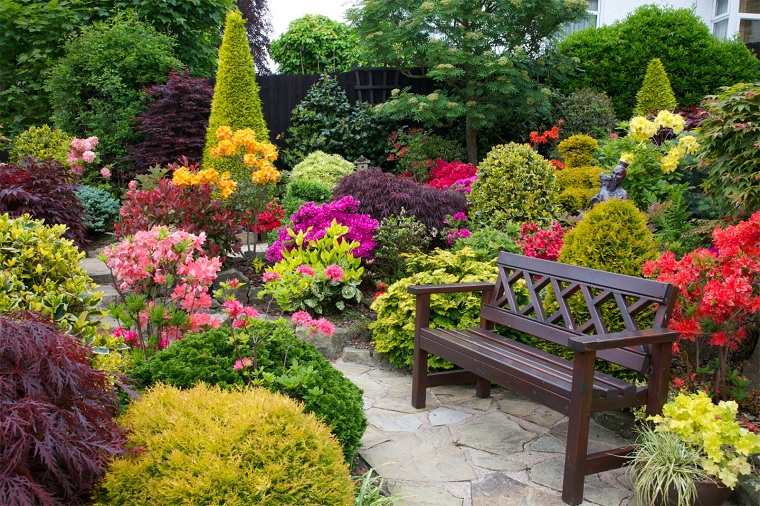
¿Quieres tener un jardín lleno de color y vida? ¡No busques más! Aquí te mostraremos cómo tener un jardín lleno de flores y te daremos una lista con las mejores opciones para tu espacio al aire libre. Pero antes de sumergirnos en el mundo de las flores, es importante mejorar tu espacio con algunos elementos básicos de jardinería. ¡Vamos a ello!
Cómo tener un jardín lleno de bellas flores coloridas

Milenrama o flor de la pluma
¡Descubre todo sobre el cultivo de la milenrama y cómo hacer que tu jardín sea aún más hermoso con esta flor! La milenrama es una de las flores de jardín más populares y se ha convertido en un elemento imprescindible en jardines de todo el mundo. Su resistencia, facilidad de cultivo y hermosas flores y follaje la convierten en una opción perfecta para los bordes del jardín.
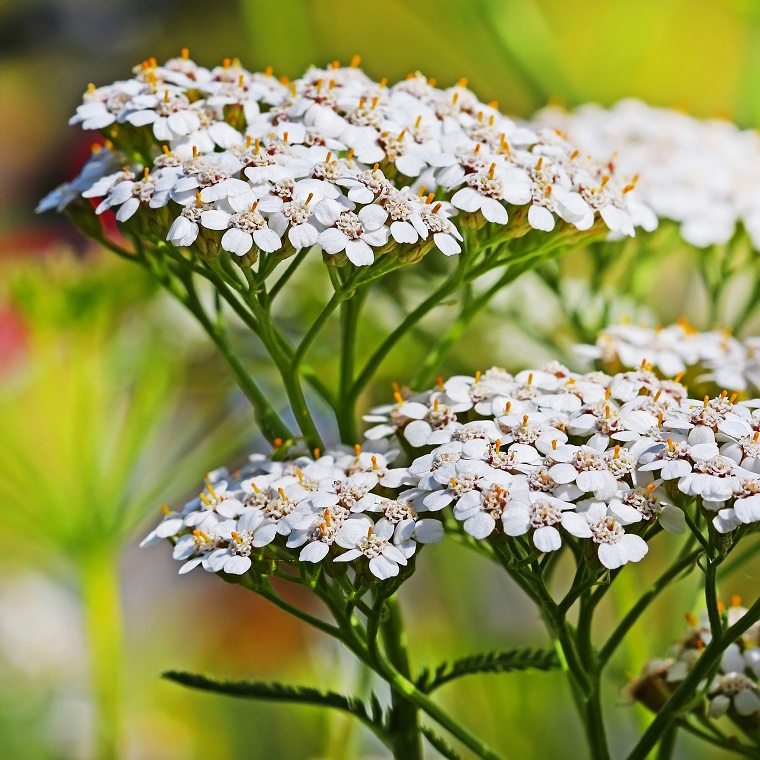
El tamaño de las plantas dependerá de la variedad que estés cultivando y las condiciones de crecimiento. Asegúrate de darle a la milenrama un lugar soleado, ya que adora el calor y el sol. Si no recibe suficiente sol, las plantas pueden crecer largas y derrumbarse. La milenrama florece durante el verano y puedes cortar las flores marchitas para obtener más capullos rápidamente. Además, esta planta es resistente al calor, la sequía e incluso al suelo pobre, por lo que es perfecta para zonas difíciles. Asegúrate de plantarla en un suelo bien drenado y considera agregar materia orgánica si tu suelo retiene agua.
Cómo tener un jardín en el cual cultivar milenrama
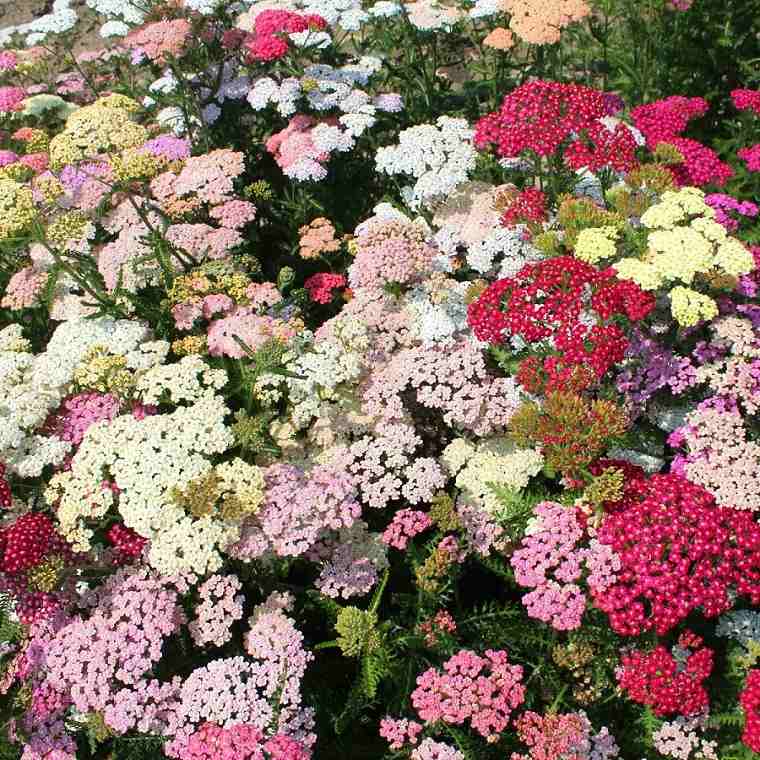
Búgula o consuelda media
¡Descubre cómo cultivar la búgula y añade un toque de color a tu jardín! La búgula es una planta excelente para proteger el suelo y viene en diferentes colores de hojas. Además, evita que las malas hierbas crezcan y florece a fines de la primavera con pequeñas y hermosas flores azules.
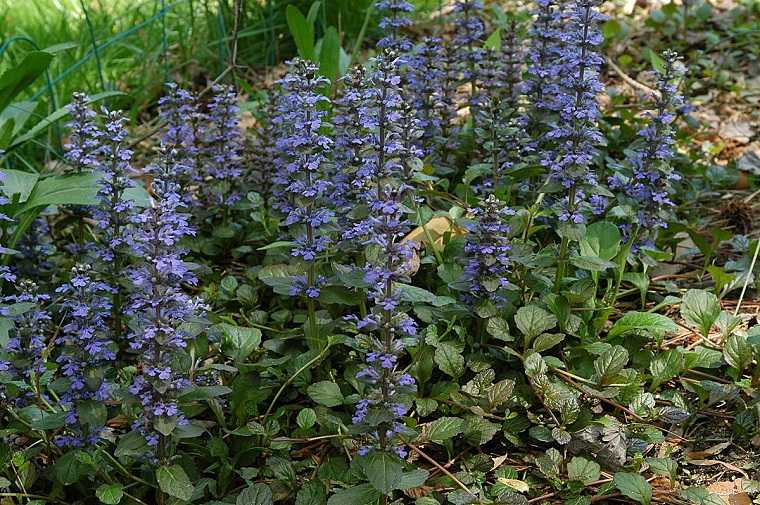
La búgula crece bien al sol o en sombra parcial y no requiere muchos cuidados. A medida que se extiende, puedes desenterrar las plantas nuevas y moverlas a otro lugar. Sin embargo, ten en cuenta que todas las partes de la planta son venenosas si se comen, así que ten cuidado si tienes mascotas o niños pequeños.
Cómo tener un jardín en el cual cultivar búgula
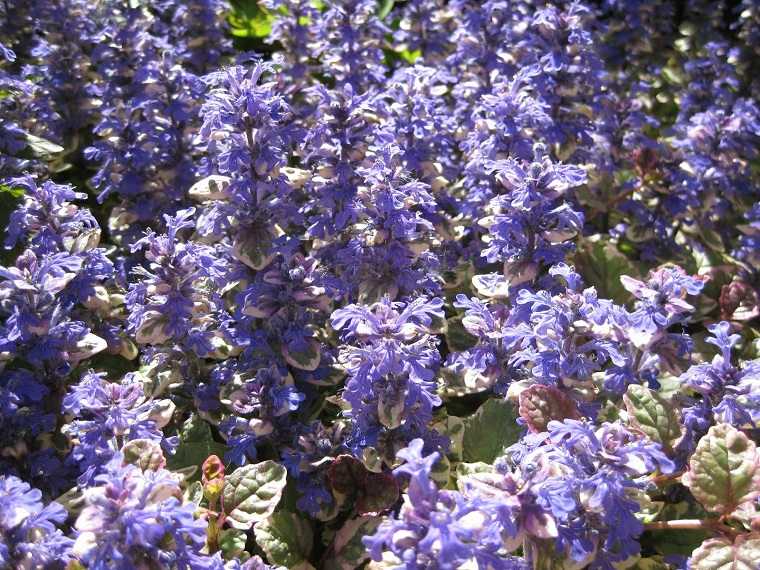
Aquilegia or Columbine
One of the sweetest flowers in spring gardens is the columbine. Aquilegia plants have an airy appearance, with small, rounded leaves and tall flower stems that hold the petals above the foliage. Aquilegia’s bell-shaped flowers are popular among bees. Mid-spring blooms fill the gap between early spring bulbs and the peak gardening season. Columbine flowers are associated with woodland gardens, but most are widely adaptable. Many species are native to areas throughout North America, from Canada to Texas. Most varieties of columbine plants will bloom for at least four weeks. They are hardier plants than they appear, but tend to be short-lived perennials.
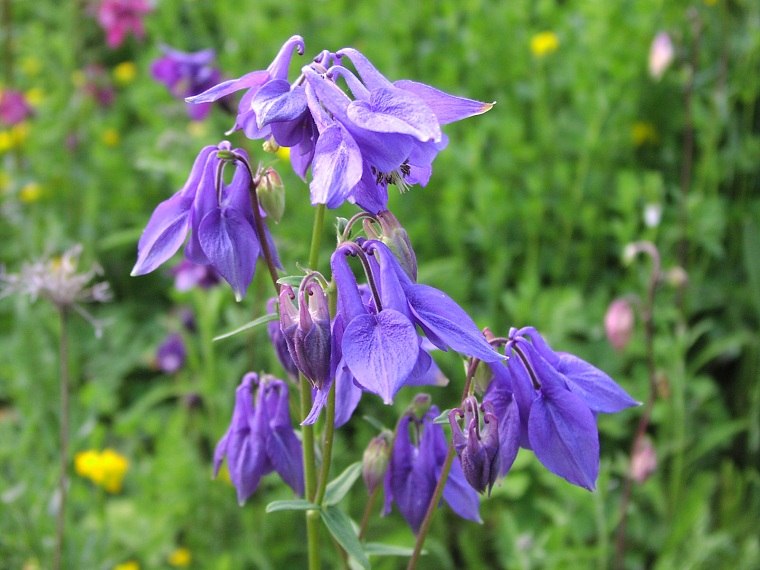
However, they will self-seed and spread, remaining in your garden for years. They have flat fan-like leaves of dark green oval leaves that turn red in the fall. Each flower is bell-shaped and has five petals that protrude from the base, surrounded by a collar of five larger ones. The petals come in a variety of colors and combinations of light blue, pink, purple, red, white, and yellow. Columbine plants can adapt to almost any garden. For the best flowering and healthier plants, a spot in partial shade is ideal. Columbine plants can tolerate full sun in spring, but appreciate some shade in the heat of summer.
How to Have a Garden Full of Beautiful Columbine Flowers
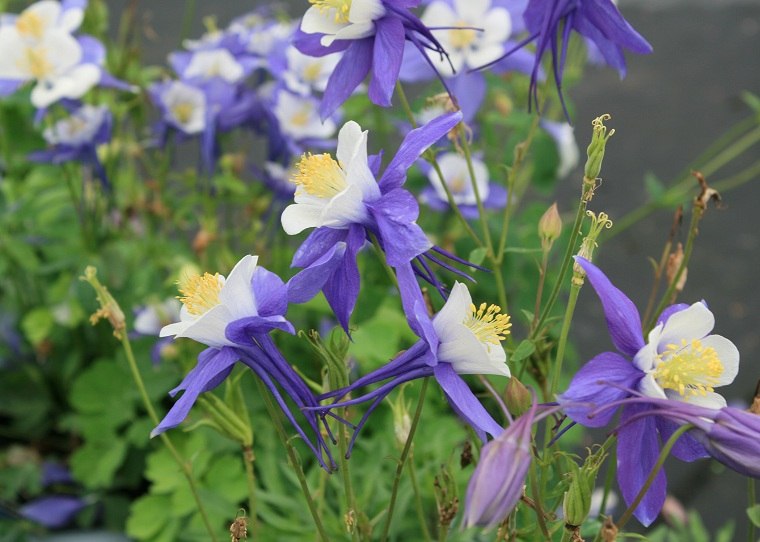
Buddleja
Buddleja shrubs are grown for their colorful flowers and their ability to attract butterflies and beneficial insects. They bloom in spring and summer, but the naturally attractive shape of the shrub and the evergreen foliage keep the shrub interesting even when not in bloom. These hardy plants tolerate a variety of conditions. Plant the shrubs in an optimal location to minimize the time you will spend on maintenance. Choose a sunny or partially shaded area where the soil is well-drained. Soil that is consistently moist helps with flowering. When planted in good quality garden soil, buddleja rarely needs fertilizer.
How to Have a Garden with a Stunning Buddleja as the Center of Attention
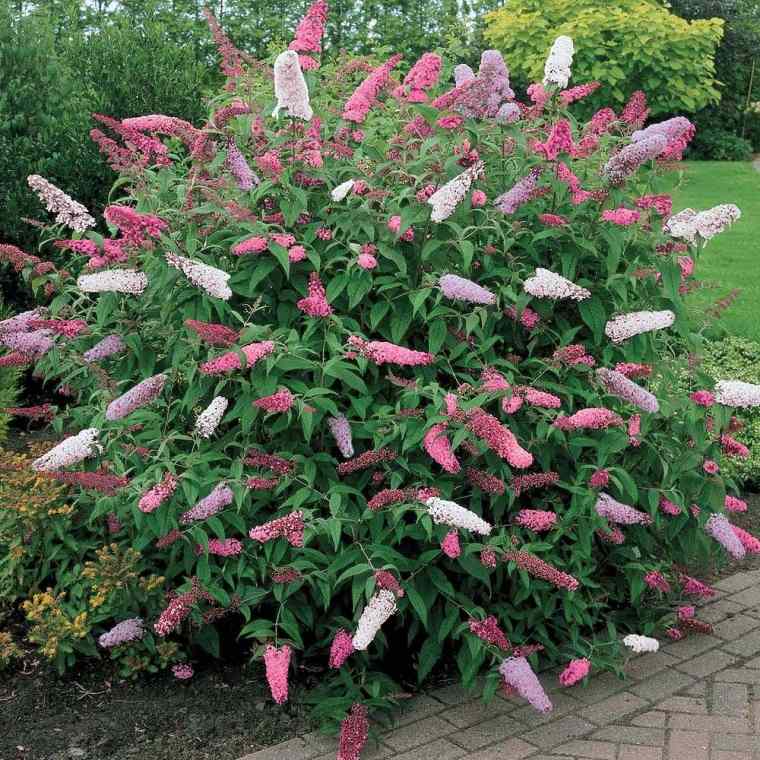
Give your plant plenty of space. Although buddleja tolerates severe pruning to maintain a smaller size, you can reduce pruning time by planting it in a location with enough space for the plant to develop its natural shape and size. Water the shrub slowly and deeply during prolonged dry periods so that the soil absorbs water deeply in the root zone. Plants do not need fertilization unless grown in poor soils. Fertilize with a 2-inch layer of compost over the root zone or apply some general-purpose fertilizer if you need to enrich the soil. This is particularly important in cold climates where the roots need winter protection. In spring and summer, remove the faded flower clusters. Seed pods develop when flower clusters are left on the plant. Do not be tempted to transplant the seedlings to other parts of the garden. Butterfly bushes are generally hybrids and the offspring are unlikely to be as attractive as the parent plant.
How to Have a Garden Full of Flowers and Which Are the Best Flowers to Grow
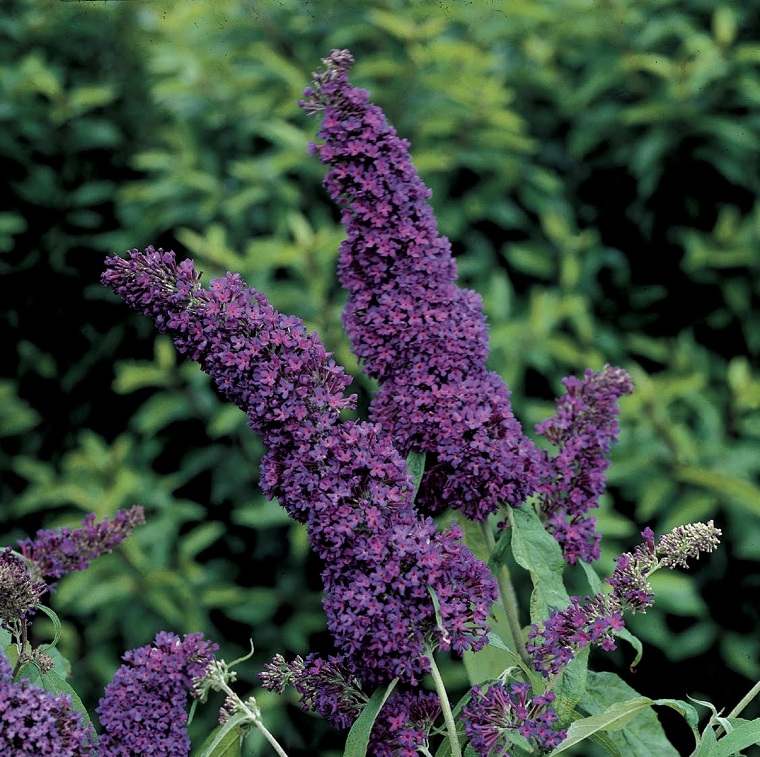
Clematis
Every gardener should know the pleasure of having at least one clematis climbing in their yard. One special feature of clematis is that if you get the right combination of plants, you can have blooms from May to September. There are over 250 species of this plant. The vines can grow very tall. Some are evergreen, some lose their leaves in winter, and some even bloom twice in the same season. Clematis can be a bit finicky. Its preference for full sun and cool soil conditions can be a bit challenging. However, with a good layer of mulch, clematis can grow in various conditions.
It’s time to transform your garden into a stunning oasis filled with beautiful climbing plants! Whether your patio is bathed in sunlight or shaded, there are varieties that can thrive in any condition.
How to Have a Garden Full of Gorgeous Climbing Plants
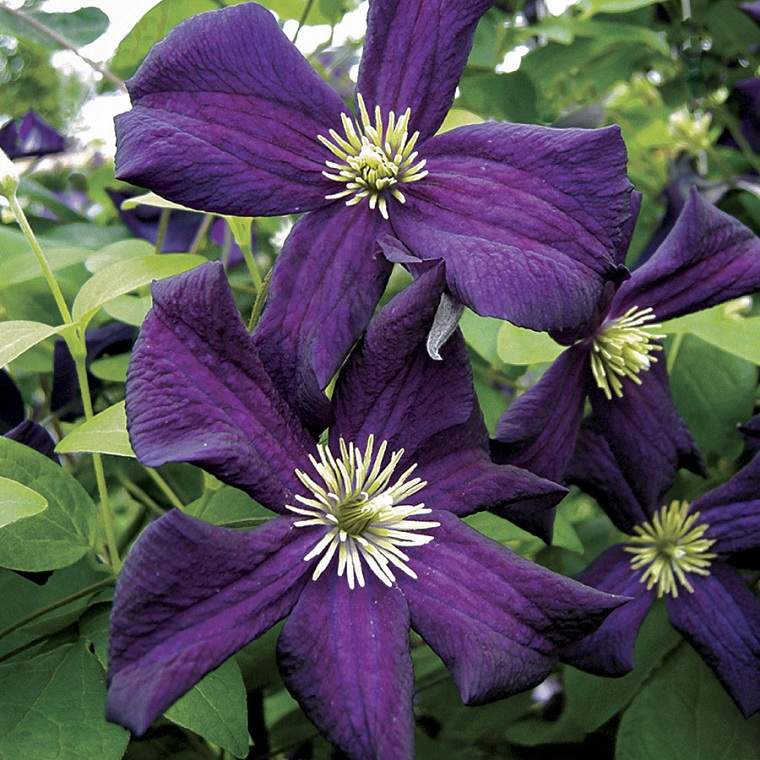
When buying climbing plants, opt for those that are at least two years old. This level of maturity ensures that the plant is vigorous and ready to bloom during the growing season. While clematis can be grown as ground cover or in containers, it looks best cascading over a support structure like an arch, pergola, fence, or trellis. Pruning is an important task, but it may vary depending on the clematis variety. Leave last year’s growth in place until mid-spring. Start pruning only when you can see which vines are dead and new ones are starting to bloom. In early spring, surround the plant with compost and organic fertilizer. During the growing season, fertilize with water-soluble organic fertilizer.
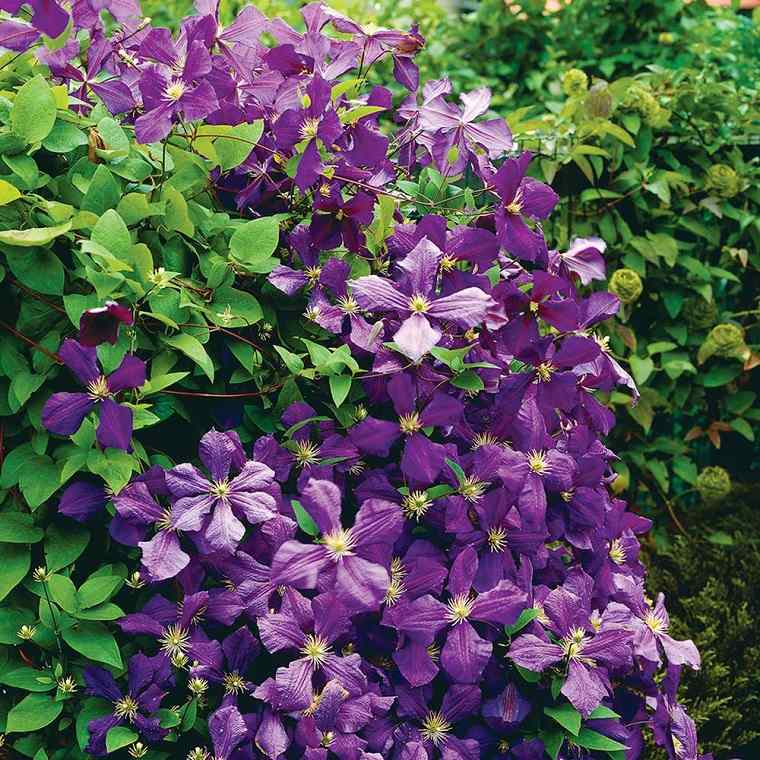
Lamprocapnos Dicentra or Bleeding Heart
The blooming of the bleeding heart plant (Dicentra spectabilis) in early spring adds a touch of charm to any garden with its heart-shaped flowers that hang from arching stems. The attractive bluish-green foliage emerges first as the plant awakens from dormancy, and the bleeding heart flowers can be pink and white or solid white. Caring for the bleeding heart plant involves keeping the soil consistently moist with regular watering. The bleeding heart plant prefers to be planted in organic soil in a shaded or partially shaded area. Fill the area with compost before planting the bleeding heart plant in autumn or spring.
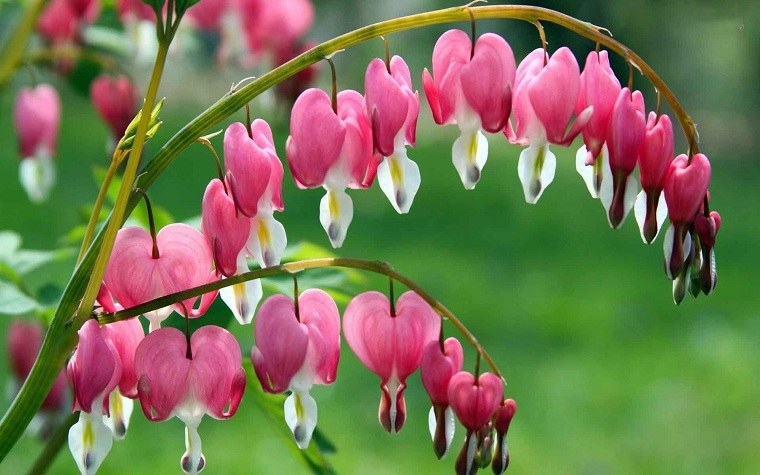
Organic mulch breaks down over time to supply nutrients and helps retain moisture. Bleeding hearts thrive in cool, shaded areas for optimal blooming in warmer southern regions, but further north, this specimen can bloom in full sun. As a perennial herbaceous plant, the bleeding heart plant loses its flowers as the summer heat arrives. As the bleeding heart plant starts to yellow and wither, the foliage can be cut back as part of its care. Do not remove the foliage before it turns yellow or brown; this is when your bleeding heart plant is storing food reserves for next year’s blooming.
How to Have a Garden to Cultivate Dicentra
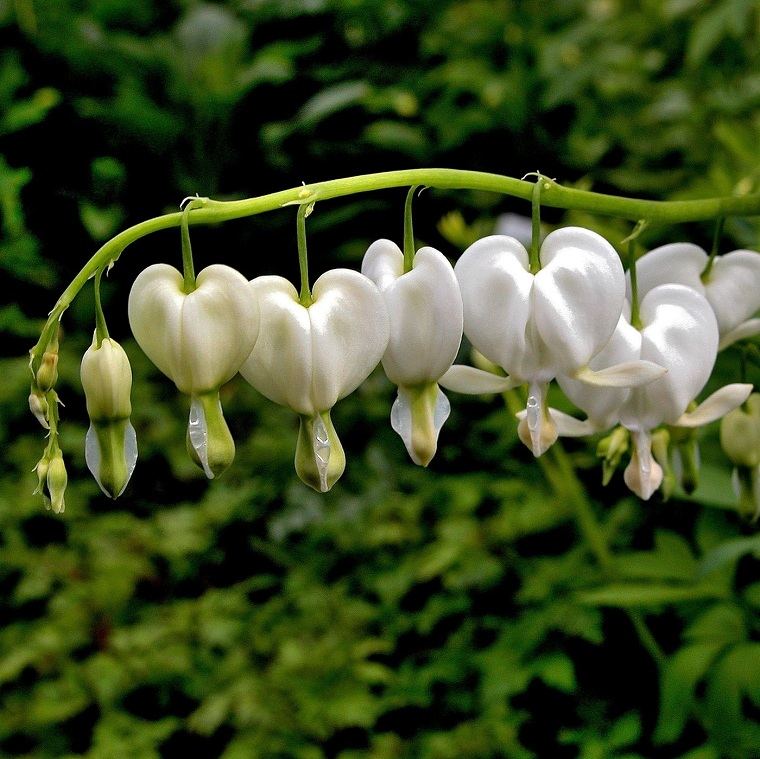
Coreopsis
Coreopsis are native plants of the prairies and forests of the United States. There are over 100 different species of Coreopsis available, although not all are perennial plants. They are low-maintenance, drought-tolerant plants with a long flowering period. Most Coreopsis form clusters, holding their daisy-like flowers on tall stems above the foliage. However, there is quite a bit of variety among Coreopsis species. Coreopsis grandiflora has bright yellow flowers on tall stems that bloom all summer long. Coreopsis rosea has finely textured leaves and pink daisy-like flowers with yellow centers. The increasingly popular Coreopsis verticillata has extremely fine and feathery leaves, with delicate flowers as well. They tend to grow in clusters, but many varieties will self-seed in your garden.
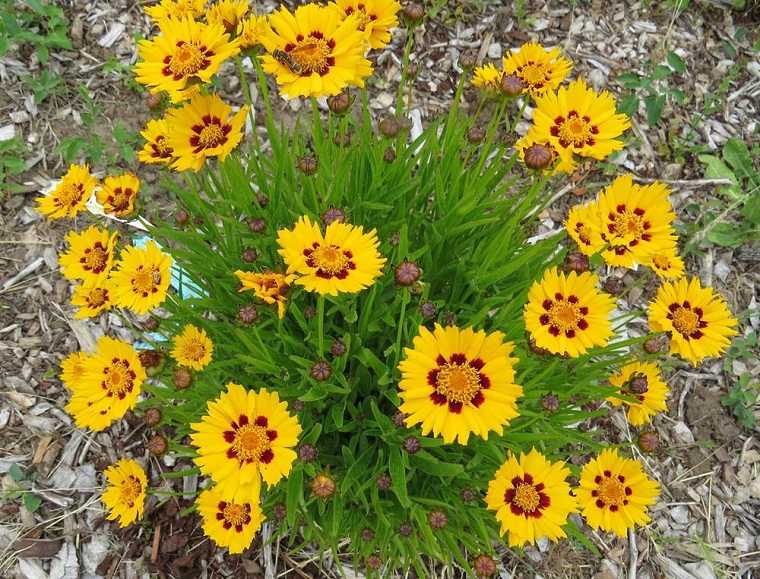
Some Coreopsis varieties will spread throughout the space. Coreopsis thrives best in full sun but can also be successfully grown in partial shade. Plants may appear less vibrant in partial shade, but they will adapt. In areas with intense dry heat, Coreopsis may even prefer some afternoon shade. Most varieties will start blooming in early summer and repeat flowering periodically until autumn. Most Coreopsis varieties are very easy to grow and are not picky about soil conditions.Enhance Your Garden with Vibrant Flowers
Coreopsis and Its Watering Needs
Coreopsis is a beautiful plant that adds a pop of color to any garden. When first planted, it requires regular watering until it establishes itself. However, once established, it becomes quite drought-tolerant. So, if you’re looking for a low-maintenance plant that still brings beauty to your garden, coreopsis is the way to go.
Echinacea: A Purple Delight
Echinacea, also known as purple coneflower, is a stunning perennial that adds a touch of brilliance to any garden. With its large daisy-like flowers, it’s a charming and water-resistant option for borders and surrounding lawns. Planting echinacea among shorter perennials creates a breathtaking display of color, with vibrant purple, pink, and white flowers standing tall above the foliage. These plants bloom from July to September and are a favorite among bees and butterflies. They prefer rich soil with a nearly neutral pH, full sun in colder climates, and partial shade in hot summers.
Gaillardia: Bursting with Color
Gaillardia, also known as blanket flower, is an easy-to-grow short-lived perennial with vividly colored flowers resembling daisies. There are over two dozen species of gaillardia, most of which are native to North America. While they are short-lived, they can reseed and spread throughout your garden. The lance-shaped, grayish-green leaves come in various shades of yellow and red. Some have petals surrounding a central disk that produces florets. Gaillardia thrives in full sun but can tolerate partial shade, especially in hot climates. However, it may become floppy and bloom less in such conditions.
Create a Beautiful and Flower-Filled Garden
To make your garden even more stunning, consider combining gaillardia with other plants like coreopsis, which has soft textures, or ornamental grasses. For added contrast, pair them with lilies. Gaillardia is not particularly sensitive to soil pH but does require well-draining soil. It can tolerate somewhat moist conditions, but heavy clay soil is not suitable. Once established, gaillardia is extremely drought-tolerant. In fact, poor soils tend to encourage more blooming, so you don’t need to worry about fertilizing.
With these vibrant flowers in your garden, you’ll have a beautiful and colorful oasis to enjoy all season long. So, get your gardening gloves on and start planting!
